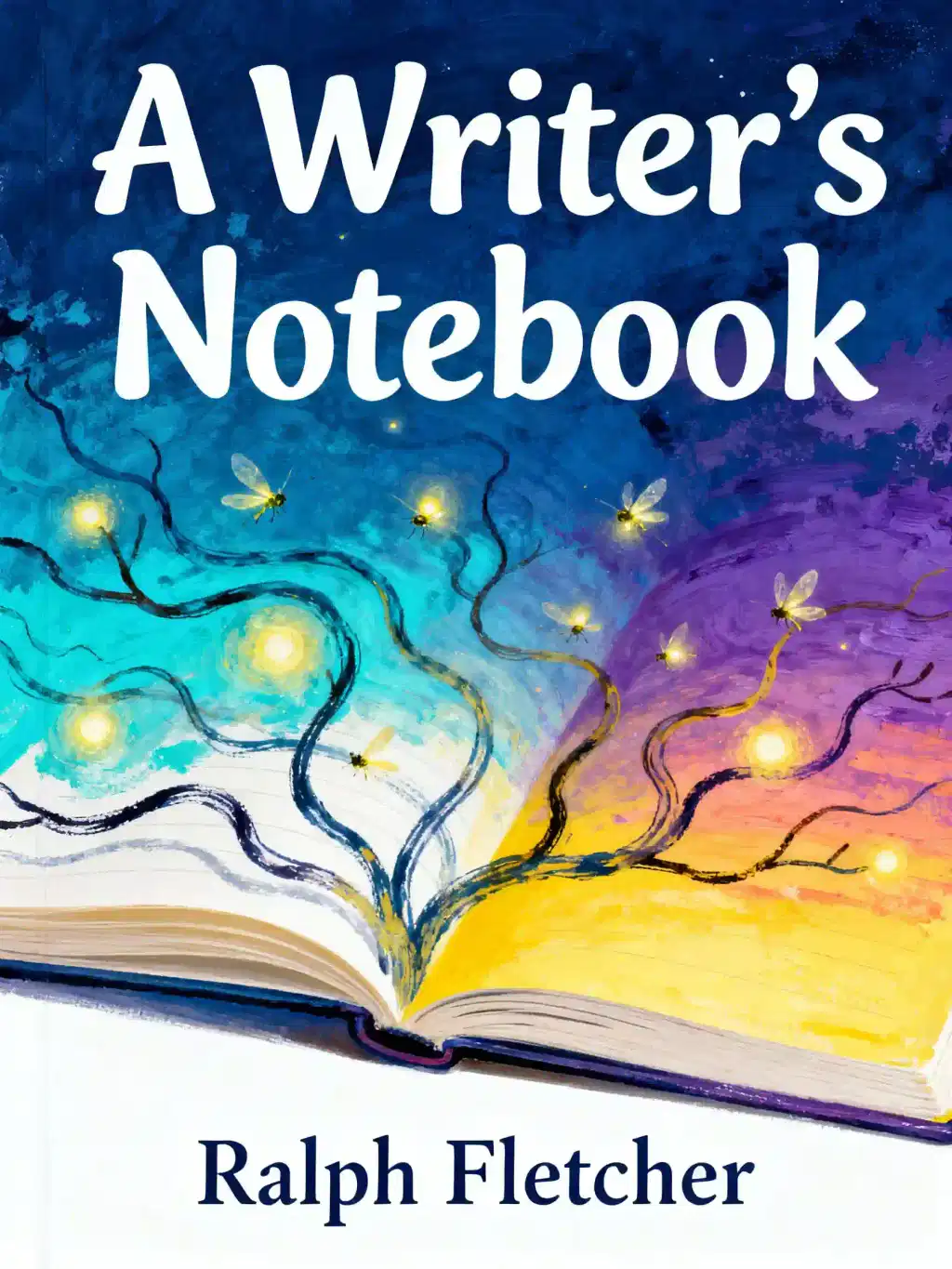What is
A Writer's Notebook by Ralph Fletcher about?
Ralph Fletcher's A Writer's Notebook explores the role of a writer's notebook as a dynamic tool for capturing life’s details (“Breathing In”) and sparking original writing (“Breathing Out”). It emphasizes observation, experimentation, and cultivating a writer’s mindset through snippets, quotes, and reflections. The book blends practical advice with philosophical insights, framing the notebook as essential for nurturing creativity and overcoming creative blocks.
Who should read
A Writer's Notebook?
This book is ideal for aspiring writers, educators, and anyone seeking to reignite their passion for writing. Fletcher’s approachable style makes it particularly valuable for young writers, but adults and seasoned authors will also find strategies to enhance their craft. Teachers can use its principles to inspire students to view writing as a natural, ongoing process.
Is
A Writer's Notebook worth reading?
Yes—readers praise its actionable advice, relatable tone, and timeless techniques. Reviews highlight its effectiveness in demystifying the writing process and providing flexible frameworks adaptable to individual styles. The emphasis on observation and revision makes it a resource writers return to repeatedly.
What are the main concepts in
A Writer's Notebook?
- Breathing In: Collecting sensory details, dialogues, and memories.
- Breathing Out: Transforming raw material into polished writing.
- Living as a Writer: Treating the notebook as a companion for daily noticing.
- Revision as Growth: Refining ideas iteratively, not just editing.
How does
A Writer's Notebook help with writer’s block?
Fletcher encourages writers to mine their notebooks for “small moments” and unexpected connections. By revisiting fragments—a phrase, image, or memory—writers can spark new ideas. The book stresses that creativity flows from consistent practice, not waiting for inspiration.
What are key quotes from
A Writer's Notebook?
- “A writer’s notebook gives you a place to live like a writer.”
- “Revision is more than a strategy; it’s a metaphor for growth.”
- “Imagine my notebook with holes so tiny that no idea can escape.”
How does
A Writer's Notebook compare to
How Writers Work?
Both books emphasize process over perfection, but A Writer's Notebook focuses specifically on using a notebook as a foundational tool, while How Writers Work addresses broader habits like drafting and finding one’s voice. They complement each other for writers seeking holistic guidance.
What criticisms exist about
A Writer's Notebook?
Some note the book’s brevity and lack of structured exercises. While its open-ended approach suits exploratory writers, those seeking step-by-step systems may find it too abstract. However, most praise its flexibility as a strength.
How can teachers use
A Writer's Notebook in classrooms?
Teachers apply Fletcher’s methods to teach students to value “small moments,” practice revision, and view writing as a habit. The book’s emphasis on curiosity over correctness helps reduce anxiety and fosters a love for writing across genres.
Why is
A Writer's Notebook relevant in 2025?
In an age of digital overload, the book’s advocacy for slow, intentional observation resonates deeply. Its analog approach offers a counterbalance to quick-paced content creation, reminding writers to prioritize authenticity and reflection.
What metaphors does Fletcher use in
A Writer's Notebook?
Fletcher likens the notebook to a “seedbed” for ideas and a “mirror” reflecting a writer’s inner world. The “Breathing In/Out” framework symbolizes the cyclical nature of creativity—gathering inspiration and transforming it into art.
How does
A Writer's Notebook address different writing genres?
While not genre-specific, the book teaches universal skills: sharpening observation for memoir, capturing dialogue for fiction, and curating details for poetry. Writers adapt Fletcher’s strategies to their preferred forms.
What are alternatives to
A Writer's Notebook?
For structured guidance: The Artist’s Way by Julia Cameron. For academic writing: Bird by Bird by Anne Lamott. For visual learners: Steal Like an Artist by Austin Kleon. Fletcher’s How Writers Work offers a broader companion.




















